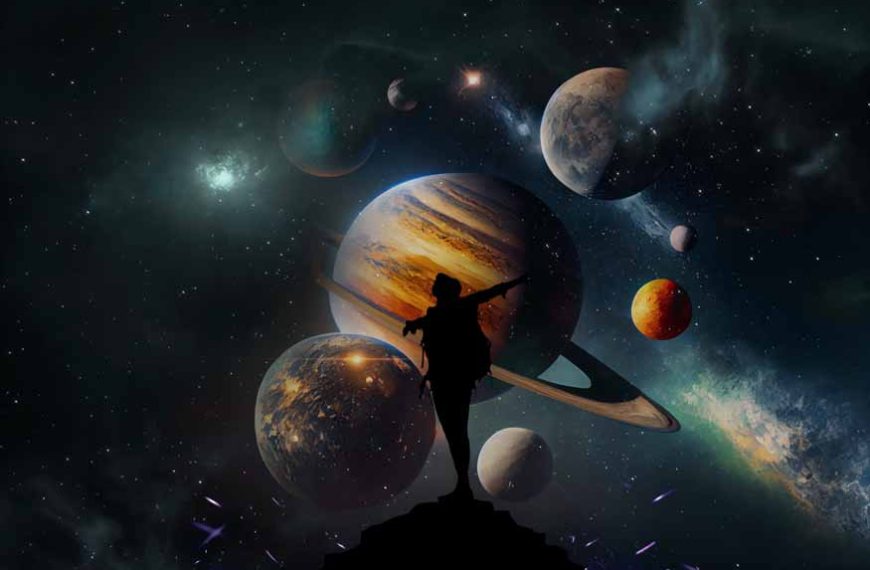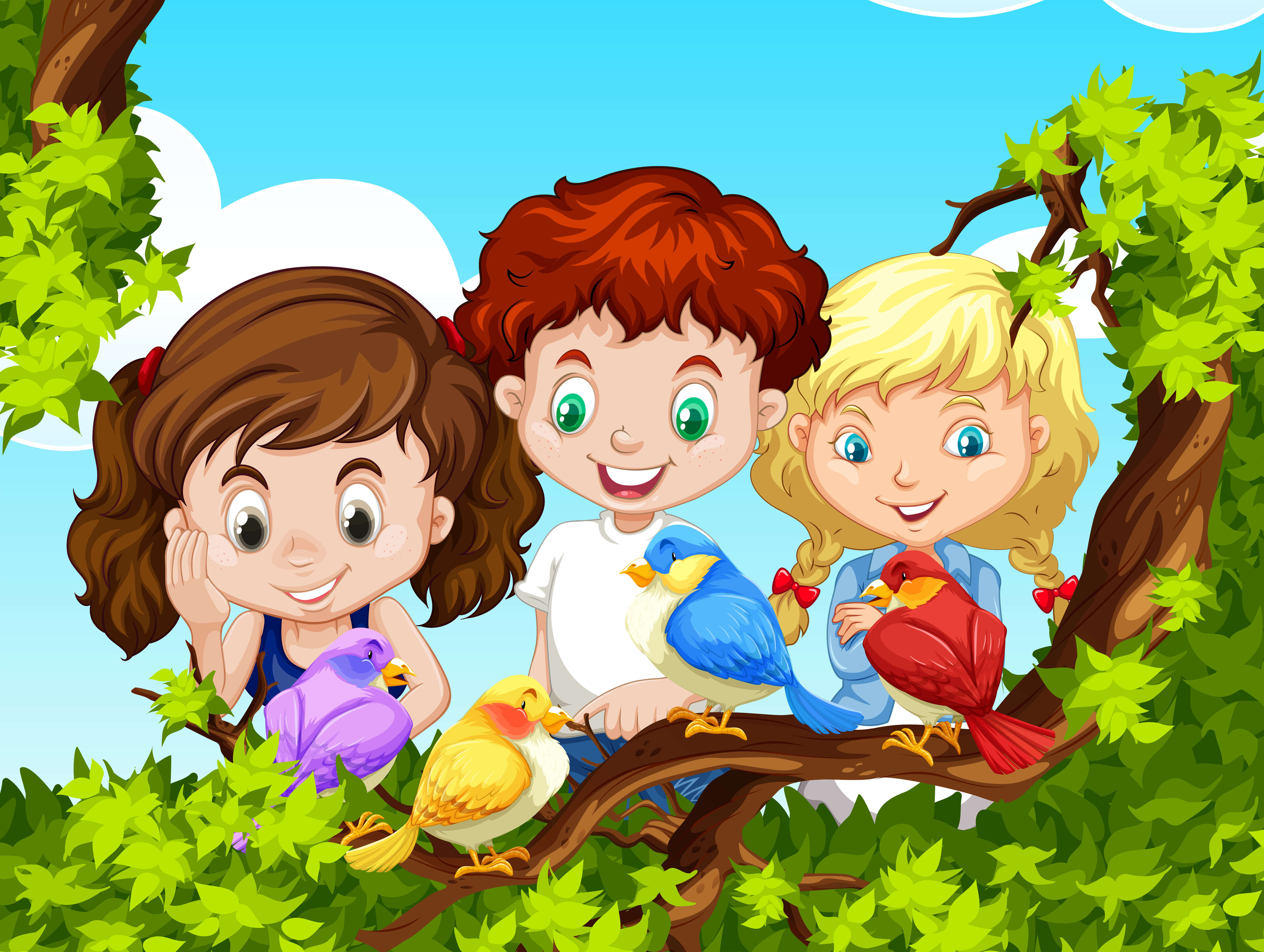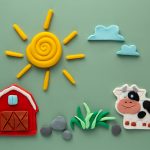When we think about the solar system, an incredible, stunning image pops up in front of us which is full of planets, stars, and various other celestial bodies.
It is filled with fascinating mysteries which are being unravelled by people all over the world and the quest is still on.
Our solar system is a huge family consisting of planets, moons, and other space objects that all coexist in the vastness of space. At the centre of this family is the Sun,
a massive ball of fire that provides light and warmth to all its members.
It consists of eight planets that revolve around the Sun and have their unique features and characteristics. Read on to know some fun facts about the solar system and get
ready to be amazed!
What is the Solar System?
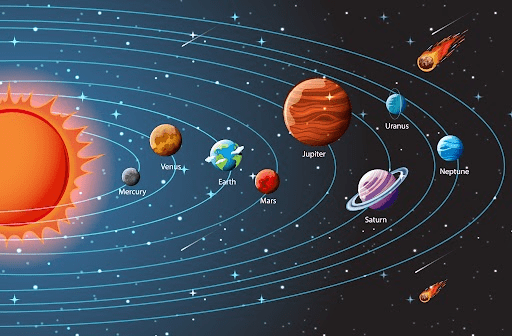
A solar system is a grouping of celestial bodies revolving around a star along with the structures that orbit around it as a result of gravitational forces. Cosmic bodies within the solar system include planets, moons, asteroids, comets, meteoroids, and other space debris. A highly familiar example is the Solar System comprising of the central star which is the Sun and the eight recognised planets including Mercury, Venus, our home planet, Earth, Mars, Jupiter, Saturn, Uranus and Neptune and their moons and quite a number of other objects such a dwarf planets like Pluto and other bodies in space like asteroids and comets.
Planets in our Solar System
As mentioned earlier, each planet is unique and has different features. Here are some interesting facts about planets that make them stand out.
- Mercury
- Venus
- Earth
- Mars
- Jupiter
- Saturn
- Uranus
- Neptune
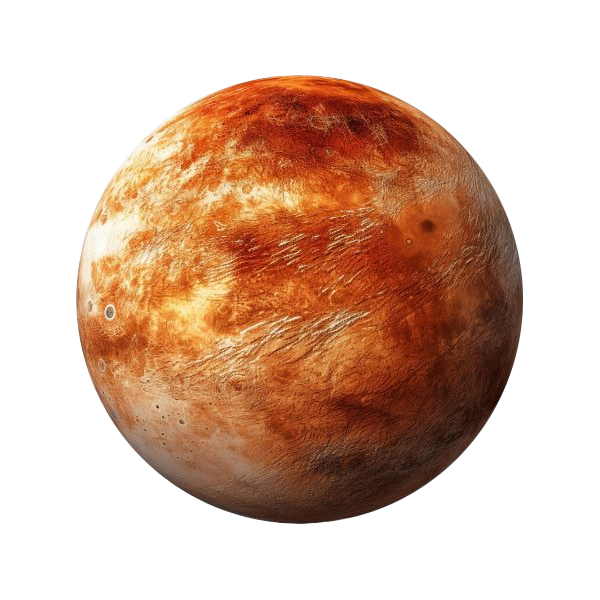
Mercury is the smallest and closest planet to the Sun in our solar system, with a diameter of just 4,879 kilometers (3,032 miles) and an average distance of 57.91 million kilometers (36 million miles) from the Sun. Due to its proximity to the Sun and lack of a substantial atmosphere, Mercury experiences extreme temperature variations, ranging from -180°C (-290°F) at night to 430°C (800°F) during the day.
It takes 88 Earth days to make one revolution around the sun.
Mercury’s rotation around its own axis is 58.65 Earth days.
It has no moons.
Fact: Mercury is the smallest planet in our solar system, and it is said to be shrinking by the day.
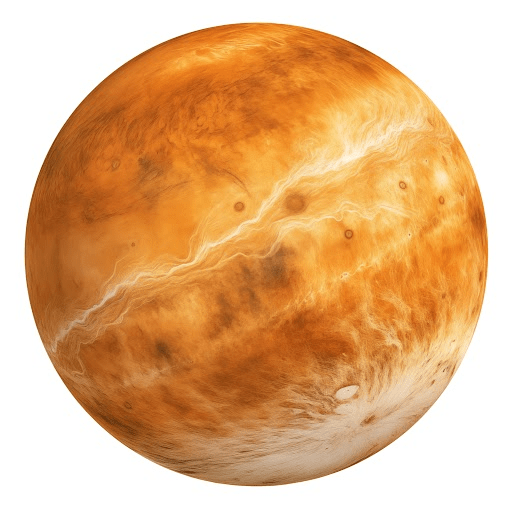
Venus has elevated surface temperatures that can increase up to 460 °C (860°F), which makes it one of the hottest planets in the solar system. It is one of the crucial planets that revolves around the sun. The atmosphere of venus comprises toxic, carbon dioxide atmosphere with elevate greenhouse conditions in the surface temperature.
It takes 224.7 Earth days to make one revolution around the sun.
Venus’s rotation around its own axis is 243 Earth days.
It has no moons.
All planets rotate anti-clockwise direction (east to west) except Venus which rotates in a clockwise direction (west to east)
Fact: Venus is the brightest natural celestial object, after the moon, that can be seen from the Earth without a telescope.
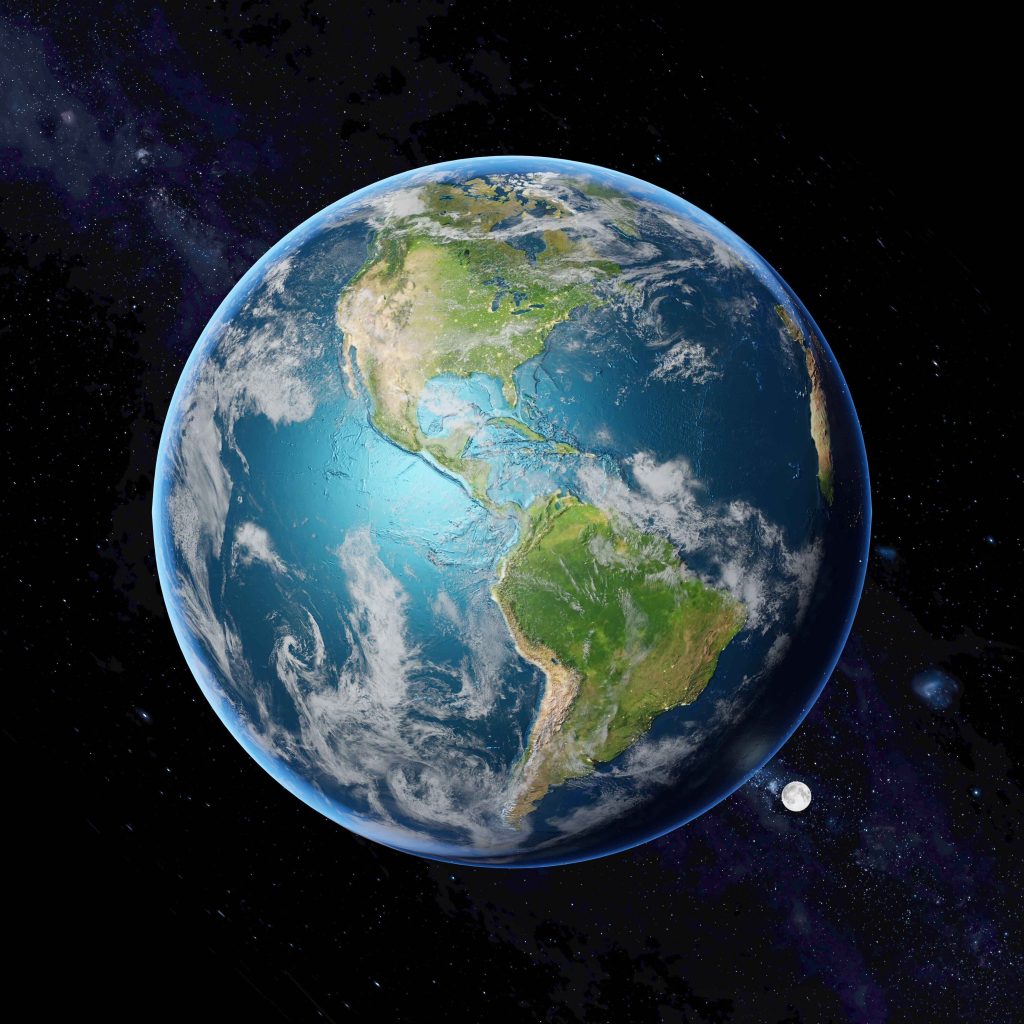
Earth is the third planet that revolves around the sun and is the only known planet that supports life. It comprises distinct ecosystems ranging from oceans, deserts, forests and polar regions. Earth is home to a million plant and animal species. Further, this planet has a combination of various factors such as liquid water, moderate climate and breathable atmosphere that makes it conducive for human beings.
It takes 365 ¼ days to make one revolution around the sun.
Earth’s rotation around its own axis is 24 hours.
It has one moon.
Fact: Earth is the only planet known planet to have plate tectonics, which is the movement of the planet’s lithosphere (crust and upper mantle) over geological timescales
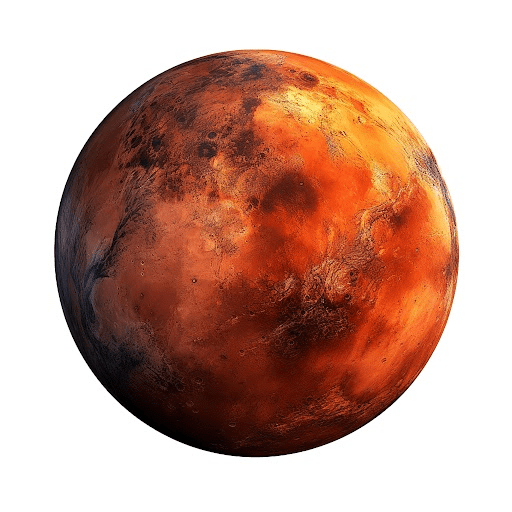
Mars is the fourth planet of the solar system and is also known as the ‘Red Planet’ due to its reddish hue, which is a result of iron oxide (rust) on its surface. The atmosphere of mars comprises carbon dioxide and has vast deserts, polar ice caps, and various geological features including the largest known volcano and canyon in the entire solar system.
It takes 687 Earth days to make one revolution around the sun.
Mars’ rotation around its own axis is 24 hours 37 minutes.
It has two moons.
Fact: Mars has a very thin atmosphere and is a cold desert.
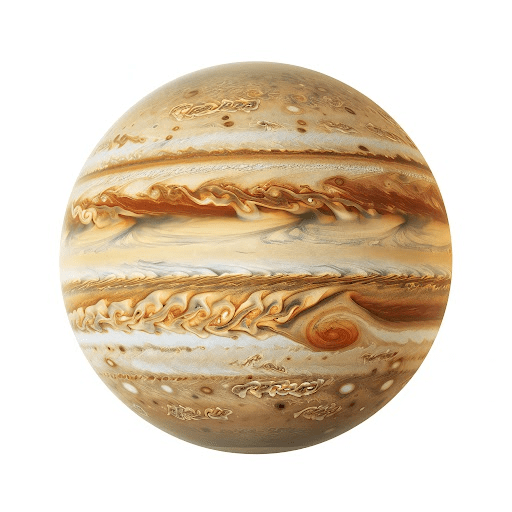
Jupiter is the fifth planet in the solar system. It is the largest planet in our solar system. Due to its thick atmosphere formed due to hydrogen and helium it is known as a gas giant. It has a huge red spot which is basically a giant storm that has been going on for several years. It has 79 moons including the four large Galilean moons: Io, Europa, Ganymede, and Callisto.
It takes 12 Earth years to make one revolution around the sun.
Jupiter’s rotation around its own axis is 9 hours 55 minutes.
It has 62 moons.
Fact: The stripes on Jupiter are, in fact, clouds made of ammonia and water that are actually cold.
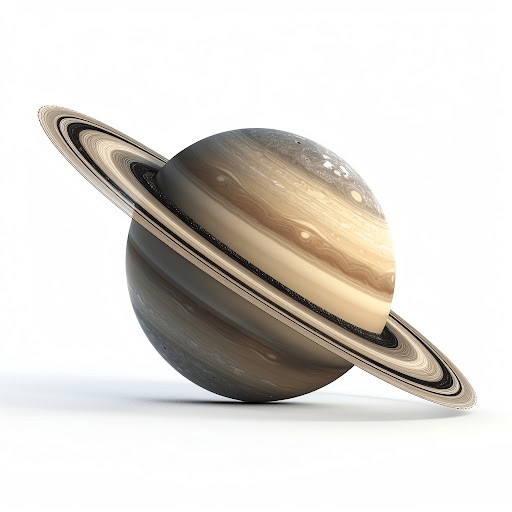
Saturn is well-known for its stunning rings and is the sixth planet of our solar system. It is also a gas giant, comprising ice and rock particles. The atmosphere of Saturn is predominantly hydrogen and helium. It has 83 moons, with Titan being the biggest and most interesting due to its thick temperature. The surface lakes of Saturn are composed of liquid methane and ethane.
It takes 29 ½ Earth years to make one revolution around the sun.
Saturn’s rotation around its own axis is 10 hours 13 minutes.
It has 60 moons.
Fact: Saturn has some spectacular icy rings around it.
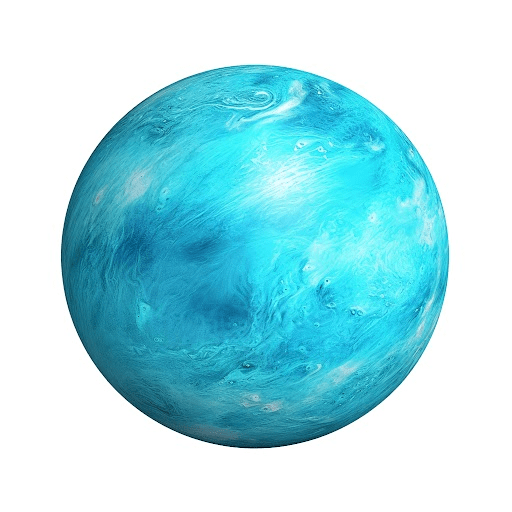
Uranus is the seventh planet of the solar system and is an ice giant. This is due to the composition of water, ammonia and methane ices. The planet has a pale blue colour due to methane. Further, Uranus has a faint ring and around 27 known moons.
It takes 84 Earth years to make one revolution around the sun.
Neptune’s rotation around its own axis is 17 Earth years.
It has 27 moons.
Fact: Uranus rotates at an almost 90-degree angle from its orbit.
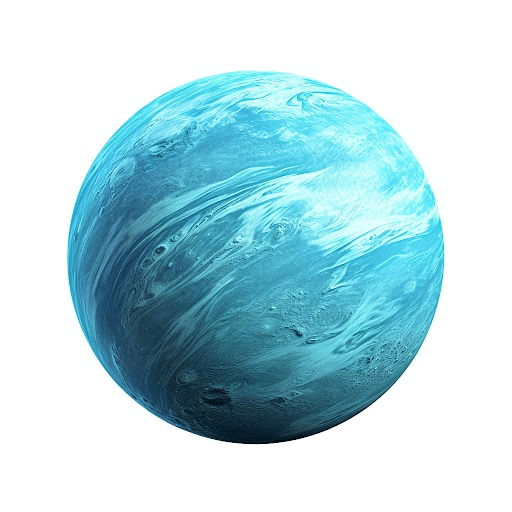
Neptune is the eighth and farthest known planet from the sun. This is also an ice giant and has a deep blue colour due to the high presence of methane in the atmosphere. It is known for its strong winds and storms, including a great dark spot, a storm that resembles Jupiter’s red spot.
It takes 165 Earth years to make one revolution around the sun.
Neptune’s rotation around its own axis is 19 Earth years.
It has 13 moons.
Fact: Neptune has the strongest winds in the solar system with speeds reaching up to 2,100 kilometers per hour.
Our solar system facts help children learn and be aware of solar and lunar eclipses.
Fun Facts about the planets
- Mercury is the smallest planet in our solar system, and it is said to be shrinking by the day.
- Venus is the brightest natural celestial object, after the moon, that can be seen from the Earth without a telescope.
- Earth is the only planet known planet to have plate tectonics, which is the movement of the planet’s lithosphere (crust and upper mantle) over geological timescales
- Mars has a very thin atmosphere and is a cold desert.
- The stripes on Jupiter are, in fact, clouds made of ammonia and water that are actually cold.
- Saturn has some spectacular icy rings around it.
- Uranus rotates at an almost 90-degree angle from its orbit.
- Neptune has the strongest winds in the solar system with speeds reaching up to 2,100 kilometres per hour.
- There are many galaxies, one of them is the Milky Way galaxy – of which our solar system is a part.
Conclusion
The wonders of the solar system spark curiosity and amazement, just like the experiences we offer at EuroKids, a school focused on helping young minds grow. Our programs encourage children to explore their world and develop a love for learning that knows no limits, much like the universe. We aim to support young learners on their educational journeys, inspiring them to reach for the stars and achieve their full potential, just as celestial bodies guide their paths.
Let’s remember that curiosity and wonder are endless—similar to the universe





